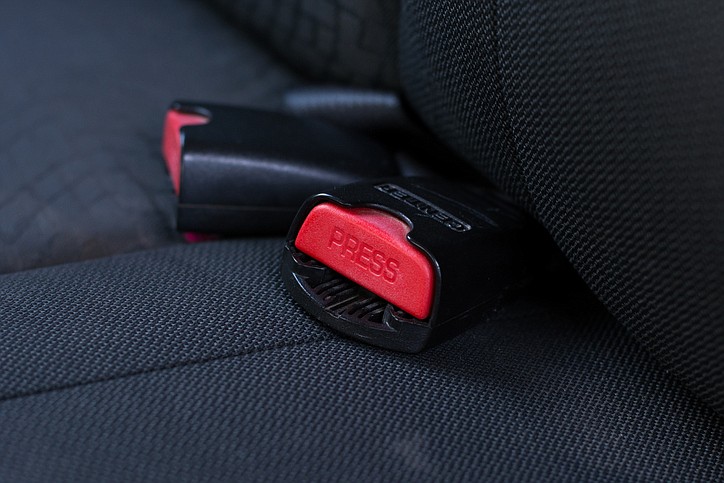Photo Gallery
Belew Christmas @ Wildwood Park for the Arts — 12/13/13
12/13 — Former The Voice contestant Cody Belew serenaded the audience with Christmas classics and tracks from his new album.
View other columns by Mark Kennedy

It has been almost two weeks since a tragic school bus crash here claimed six young lives and sparked a wildfire of despair.
Maybe, given time, the community's grief will evolve into resolve, and we will be energized to improve school bus safety.
News coverage has focused on the the Durham School Services bus driver, whom authorities suspect of speeding before the accident on Talley Road, and on possible measures by state lawmakers to require safety belts on school buses, a push which has been tried before without success in Tennessee.
As a parent of two boys who are occasional bus riders in the Hamilton County school district, the tragedy has made one thing clear to me: When it comes to safety, today's school buses are 20th century relics in a 21st century world.
Parents who insist on having family vehicles with the government's top safety ratings routinely put their children on school buses that rely mainly on primitive safety features. What modern mother, for example, would regularly transport her children in a car with no seat belts and no air bags?
Yes, statistically school buses tend to be fairly safe and fatal crashes involving children riding in them are rare. More children died in Chattanooga as a result of one bus crash than typically die in all the school bus crashes across America in a given year.
But our precious cargo deserves more than soft assurances from actuaries and inaction by tight-fisted politicians. We need to start modernizing our bus fleet. Take it from a person who drives new cars, trucks and SUVs for a living, the chasm between the safety technology on today's family vehicles and public school buses is vast.
Almost all new cars and light trucks sold in America come with three-point seat belts, an array of airbags, energy-absorbing crumple zones built into the vehicle, back-up cameras and, most importantly, electronic stability control, a computer-controlled throttle and braking system that helps prevent rollovers.
Stability control is especially helpful in keeping top-heavy vehicles such as trucks, SUVs and - yes - school buses upright during panic maneuvers. Once a bus tips over on its side or flips, its occupants are in trouble.
I'm no engineer, but here are some common-sense ideas for boosting school bus safety based on technology we know already is in the marketplace.
- Seat belts: Five states already require seat belts on school buses. A recent study by the state of Alabama showed that seat belts were effective in reducing injuries, but their cost - up to $10,000 per bus - has persuaded lawmakers there to pass on requiring them.
Maybe now is the time in Tennessee.
According to a report last week, Tennessee's state government currently is running a budget surplus, with about $466 million in new revenue available. Perhaps we could take a few million dollars of those surplus funds to at least begin equipping new school buses with three-point seat belts.
- Stability control: Anti-lock brakes, a once-exotic safety feature, are now standard on all new vehicles sold in America. ABS is mandated by federal law on school buses as well.
Stability control, a more sophisticated safety system which also uses a car's brakes to maintain control, is mandatory for large, freight-carrying commercial trucks but not for school buses. This relatively new technology might be as effective as seat belts in preventing bus fatalities.
- GPS tracking: Insurance companies offer GPS plug-ins that can monitor the driving habits of teenagers and send periodic reports to their parents if they flout traffic laws. Today's big trucking companies are also fanatical about tracking the safety habits of their drivers.
Shouldn't we likewise expect the transportation companies that provide contracted school bus services to monitor their own drivers closely, using GPS so they can spot and replace habitual speeders? Aren't our children more important cargo than furniture and groceries?
- Surround-view cameras: Nissan, in particular, has perfected equipment that allows a driver a 360-degree camera view around a vehicle. Such a system might be especially helpful in improving safety for kids getting on and off school buses where many school transportation accidents occur. Durham executives told the Times Free Press on Friday that the company is accelerating placement of smart cameras in all buses to more quickly identify erratic behavior.
- Parent volunteers: There is no safety system as important as a focused, undistracted driver. If an army of parent volunteers could be mobilized as before- and after-school bus monitors, safety could be improved immensely. More professional monitors are reportedly on the way, but parent volunteers could also help pinpoint onboard problems. Durham executives said 30 more bus monitors will be hired to ride their buses here (70 monitors already are on the job to help on buses with special needs students).
Turning heartbreak into decisive action is the most fitting tribute we Hamilton Countians can pay to our dead and injured Woodmore Elementary children.
The mission is clear. The time is right.
Let's get it done.
Contact Mark Kennedy at mkennedy@timesfreepress.com or 423-757-6645.


